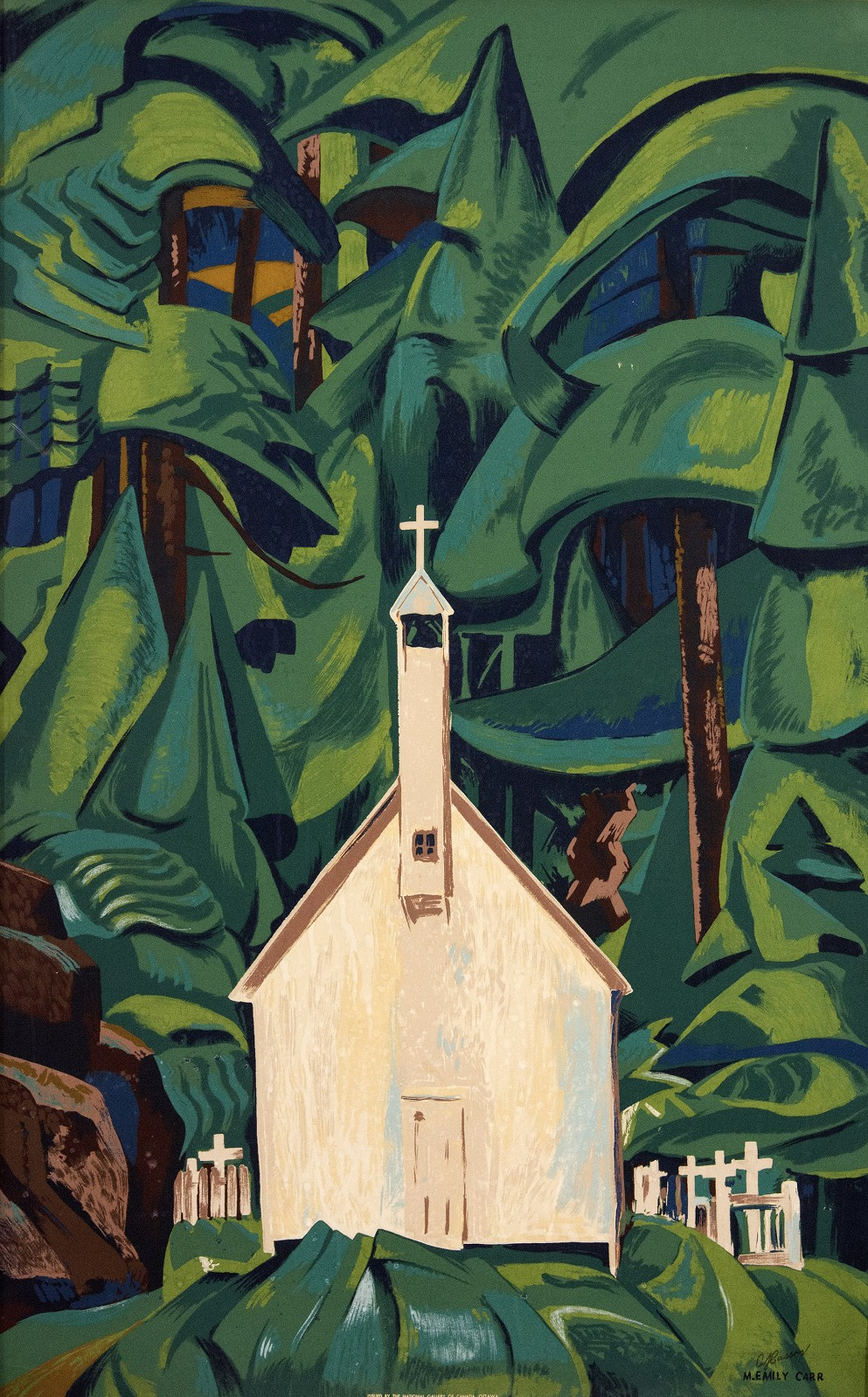Art Analysis of Church at Yuquot Village
This piece is called "Church at Yuquot Village" created by Emily Carr in 1929. It was originally called "Indian Church" but was renamed by the Art Gallery of Ontario in 2018 due to cultural sensitivity. This church was built by missionaries as part of an assimilation effort.
Art Elements
The artist, Carr, uses many art elements in conjunction with one another. The church uses vertical lines in the building that suggest strength , the pitch of the triangle roof leads the eye up to the steeple topped with a cross. This creates a sense for me that the church was showing their strength and purpose through their building. The strong vertical design matched with a roof that pitched the eye upwards to the cross that represents the religion from which the church is born of. The church is a man-made shape painted white to represent purity, cleanliness, and innocence, all important values to the church.
The church is surrounded by natural patterns produced by the forest's colorful trees. There is a use of color in the tree leaves that creates the tone of light that is dancing through the trees. The curve the artist gives the different tree branches separates the branches from one another but also creates a sense of relaxation from the rigid lines of the church. It gives me the impression that the church does not belong in this forest, the artist has included crosses behind the church that mark a graveyard. It evokes a sense of doom or tragedy. These crosses could represent the indigenous people who died in assimilation or the religious missionaries who ventured into a wild land full of danger and possibility.
Emily Carr
Emily Carr was born in Victoria, Canada on December 13, 1871. Her parents were British immigrants from England. Emily was an orphan at age sixteen and left a few short years later to study art at the California School of Design. She later taught art in Canada and studied at the Westminster School of Art. In 1907, Carr took a trip to Alaska that had a profound influence on her art and life. She continued her education in France and returned to Canada where she traveled to visit indigenous communities and where she would draw inspiration for some of her most famous life works. She was an advocate for indigenous arts and her enthusiasm is apparent in her own paintings.
Sources:
https://www.aci-iac.ca/art-books/emily-carr/biography/
https://www.verywellmind.com/color-psychology-white-2795822
https://www.aci-iac.ca/art-books/emily-carr/significance-and-critical-issues/




I agree, the church doesn't really belong there, with it's rigidity and disparate color. It would be interesting to see where the artist was coming from, what her inspiration was for this.
ReplyDeleteIf it's a pro church painting, you could say it's an adaptation of the Sermon on the Mount, a version linked here
https://www.churchofjesuschrist.org/media/image/christ-teaching-the-people-31eb3e7?lang=eng
If you can't follow the link I reckon you could copy and paste it.
In that version Christ is clad in white, at the center of the piece, bringing the word to those who would wish to no longer be unclean.
The church shares some aspects with Christ in that painting. It's white, and very linear, and at the center of a wild forest, as if to demonstrate that the church is sermonizing to the wolves, trying to bring them into the fold.
Someone that was not pro church would could interpret that this painting is a demonstration of the intrusive and violative nature of particular types of missionary from particular parts of history. In order to survive in the forest, you'd have to be somewhat nomadic, following food sources. But the church is fixed, and near it you must remain, because they said so. And if you speak your Native tongue you'll be beaten.
I wouldn't own a copy of this. It's beautiful work, but I can't make it not appealing to me.